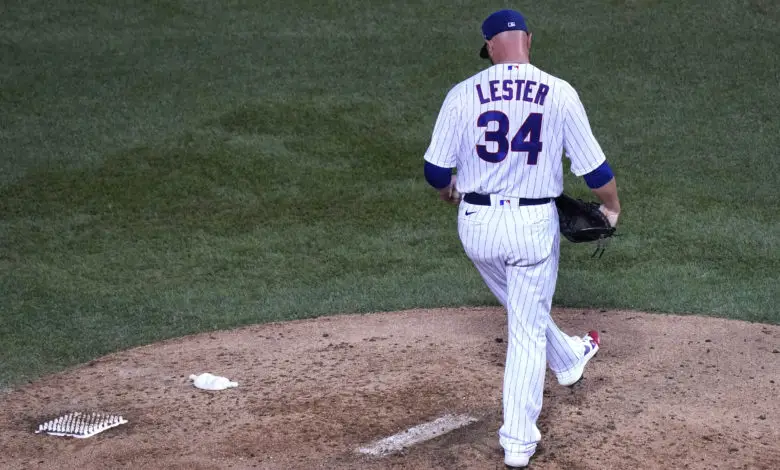
Cubs Could Use Adam Wainwright’s Incentive-Laden 2019 Deal as Template for Jon Lester’s Return
Both Jon Lester and the Cubs have expressed interest in a reunion, though it’s not going to be under the terms of the $25 million option the club holds on the lefty. That’s a pretty decent chunk to allocate toward any pitcher, let alone one who’ll turn 37 in January, and the Cubs figure to stay on the cheap side with most of their acquisitions this winter. With that in mind, they could look to their division rivals in St. Louis for a contract structure that makes sense for both pitcher and team.
Adam Wainwright has pitched each of the last two seasons on incentive-laden one-year deals set up to limit the Cardinals’ immediate exposure while still giving the veteran a chance to earn decent money. Though both deals were very similar in terms of their structure, it’s the 2019 contract that probably fits the best in this case. I’d like to say it’s because the two pitchers in question were of similar age, but it’s really about the lower base salary.
In addition to trying to avoid a third consecutive competitive balance tax overage, the Cubs will almost certainly limit their actual spending in 2020. It’s important here to note the potential for a very big difference between the checks ownership is cutting to players and the amount of average annual value going toward the luxury tax calculation. Whether and to what extent you believe the Cubs experienced biblical losses as part of an industry that doesn’t make much money, it’s plausible that they have and will feel a pinch in terms of liquidity.
That’s where Lester becomes a perfect example of how ownership and the front office will likely attempt to navigate the winter. His $10 million buyout was part of his guaranteed salary, so it’s been included in his AAV over the last six years and will not count toward the Cubs’ CBT total for 2021. However, the Cubs will still have to pay Lester that amount and might not be too keen on guaranteeing him another $5 million or more in base salary.
Enter the Wainwright comparison. The righty finished up a five-year, $97.5 million deal in 2018 with an injury-shortened campaign that torpedoed his value, but he and the Cards still wanted to run it back for a 14th season. They agreed on a one-year deal for a $2 million base salary with up to $8 million in incentives as a starter or $7 million as a reliever, and he actually ended up triggering the bigger bonus with 30 starts in 2019.
The comparison gets a little tricky is in the escalators, since an extra $8 million could eat up most or all of the leeway Theo Epstein figures to leave for midseason acquisitions. Though only the $2 million initially factors as AAV, those bonuses would count once reached and aren’t as far-fetched as you might think. Lester recorded at least 31 starts in 12 consecutive seasons prior to 2020 and his 12 starts extrapolate to 32 in a normal year, so there’s a good shot he could still get there.
Maybe Epstein structures things a little differently with something like $250,000 for every five-start milestone up to 20 starts and then $500,000 or $1 million upon hitting 25 and 30 starts. That would allow Lester to earn $2-3 million on top of his base while getting a chance to earn his 200th win as a Cub. It also allows the front office to stay within a budget that figures to be tighter than ever.
Most importantly, it would significantly reduce the amount of money the Cubs need to spend on starters in free agency. Epstein has already said they plan to invest in rotation depth from outside the organization, but Lester coming back on the cheap means they might not have to look for an everyday pitcher. And for those who argue that Lester’s lost it, consider that his 5.16 ERA would have been just 3.35 were it not for two terrible starts against the White Sox.
Yes, I’m cherry-picking. I’m also looking at a man who means a lot to the organization and who can capably hold down the fifth spot in the rotation for at least one more season. He’ll have to take a massive pay cut to do it, but there’s mutual desire and a pretty clear precedent for how he and the Cubs can make that work.

